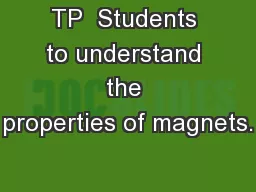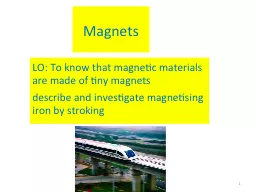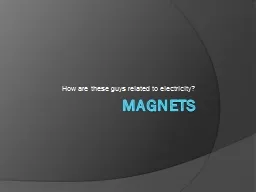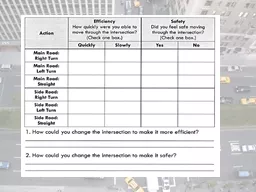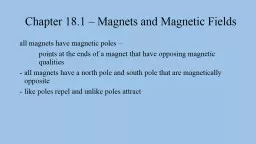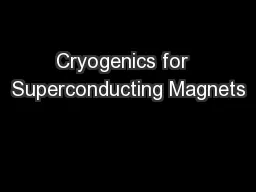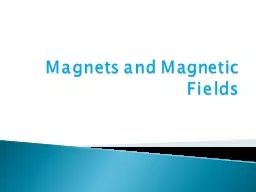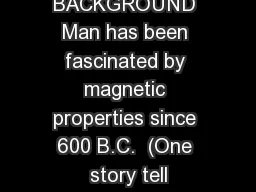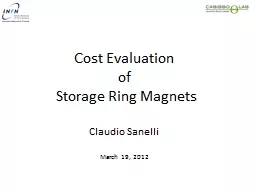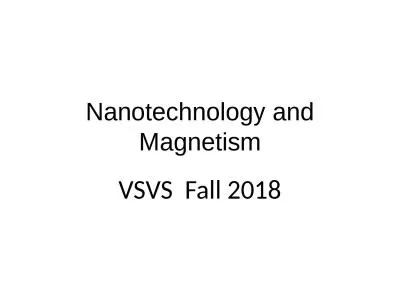PPT-TP Students to understand the properties of magnets.
Author : calandra-battersby | Published Date : 2017-12-20
What is a magnet Magnet Permanent Magnets By shape Material Temporary magnets Electromagnets 1 ALL magnets have NORTH and south poles 2 When freely suspended all
Presentation Embed Code
Download Presentation
Download Presentation The PPT/PDF document "TP Students to understand the propertie..." is the property of its rightful owner. Permission is granted to download and print the materials on this website for personal, non-commercial use only, and to display it on your personal computer provided you do not modify the materials and that you retain all copyright notices contained in the materials. By downloading content from our website, you accept the terms of this agreement.
TP Students to understand the properties of magnets.: Transcript
Download Rules Of Document
"TP Students to understand the properties of magnets."The content belongs to its owner. You may download and print it for personal use, without modification, and keep all copyright notices. By downloading, you agree to these terms.
Related Documents

